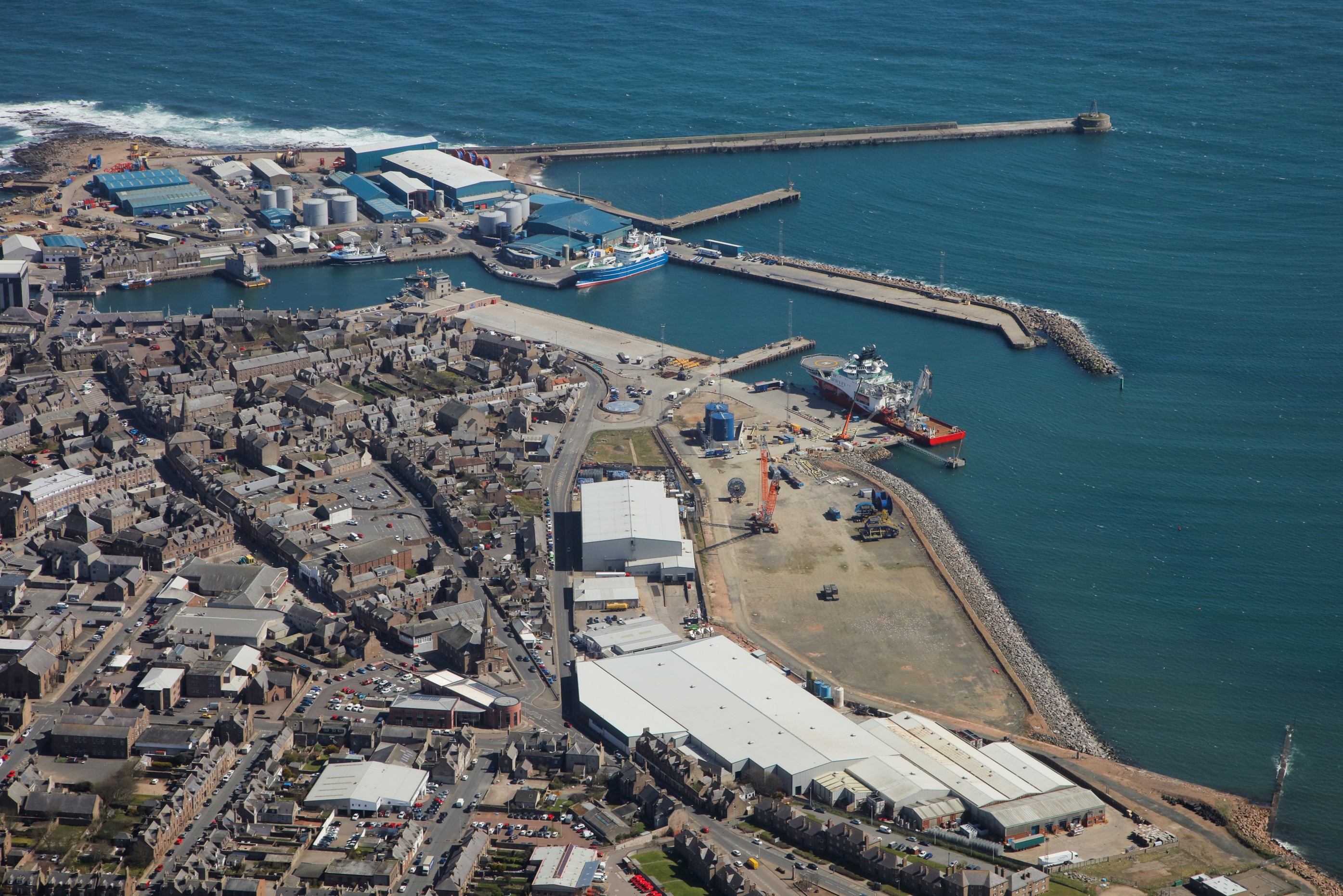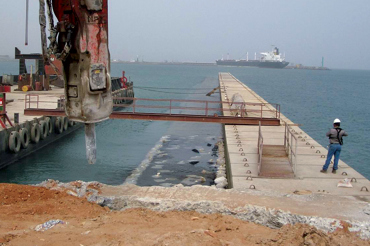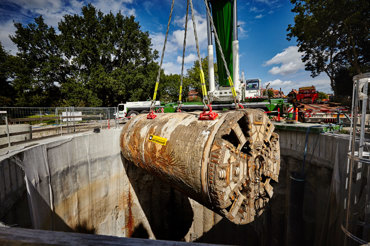
Marine Licensing
NIRAS Involvement in Marine Licensing for Coastal Infrastructure Projects
NIRAS is a multidisciplinary consultancy company with extensive expertise in marine environmental services, including marine licensing. NIRAS provides comprehensive consulting services related to port terminals, coastal and marine civil works, and has been involved in numerous projects worldwide. The company's involvement spans all project phases, including master planning, feasibility studies, environmental impact assessments (EIAs), licensing and consenting, due diligence, design, construction supervision, and project management.
Here we outline how NIRAS can support you through the marine licensing process. We use the licensing process in the UK as an example, but we cover similar consenting and impact assessment processes elsewhere including Europe, Africa, and SE Asia.

Legislative Background
Marine licensing in the UK is governed by several key pieces of legislation:
- Marine and Coastal Access Act 2009: This Act provides the framework for marine licensing in the UK, regulating activities taking place at sea and enforcing regulatory requirements. The Marine Management Organisation (MMO) is responsible for determining marine licence applications under this Act
- Marine (Scotland) Act 2010: This Act governs marine licensing in Scottish waters, aiming to safeguard the future of Scotland's seas and simplify the marine planning and licensing system
- Marine Works (Environmental Impact Assessment) (Scotland) Regulations 2017: These regulations require an Environmental Impact Assessment (EIA) for certain marine works to ensure that potential environmental impacts are considered before granting a marine licence
- Under these legislations, many developments in coastal or offshore areas, such as port, harbour, and marina developments, require an environmental assessment, often a formal Environmental Impact Assessment (EIA) but it can be a minor Environmental Appraisal (EA). The aim of an EIA is to gain a comprehensive understanding of the significant effects of a development on the environment, enabling informed planning decisions. It is important to point out that EIA is a process, not an end point, and may require revisiting some steps repeatedly to perfect the project design and incorporate stakeholder needs.
Screening
The first step in the EIA process is a screening exercise to determine whether an EIA is required by law. This involves requesting a Screening Opinion from the Secretary of State. For smaller projects, this step helps establish the necessity of an EIA where an Environmental Appraisal report may be sufficient instead.
Scoping
The next stage is Scoping, which identifies the main issues and outlines how data will be collected to inform the assessment. This stage considers the relevant spatial and temporal scales of the assessment, including the appropriate Zone of Influence, and identifies relevant stakeholders. Existing data is reviewed for gaps and site-specific marine ecology surveys are proposed to support those information gaps. For port, harbour, and marina developments, data collection may occur at locations where infrastructure is planned or within dredge pockets if dredging is required. A Scoping Report is submitted to the Regulator as part of the request for a Scoping Opinion, detailing the Regulator's requirements.
Environmental Statement (ES) or Preliminary Environmental Information Report (PEIR)
Following Scoping, the process diverges based on the project's scale. For many projects, an EIA is conducted, resulting in an Environmental Statement (ES). However, for large Nationally Significant Infrastructure Projects (NSIPs) in England and Wales, a Preliminary Environmental Information Report (PEIR) is required. The PEIR is used in statutory consultations, engaging early with the Regulator and main stakeholders to help steer project design and ensure that the final impact assessment is conducted in line with the requirements of stakeholders.
Environmental Statement (ES) Production
The ES incorporates the findings of the PEIR and the updated project design, with revised assessments if necessary. The ES forms the basis of the supporting impact assessment submitted with consent application, covering all relevant receptors and impacts that have been scoped in'.
Assessing Environmental Impact
Whether an Environmental Statement or Appraisal is required, an assessment is ultimately needed of environmental effect. The existing marine environment within the Study Area is defined within a baseline assessment, identifying any protected species or habitats and the presence of non-native species as well as describing their spatial and temporal patterns, existing threats and sensitivities. The identified impacts are then evaluated, considering the likelihood, extent, duration, timing, and frequency of the impact. The magnitude of the impact, combined with the sensitivity and conservation value of the ecological receptor, is used to assess the overall significance of the effect.
Habitats Regulations Assessment (HRA)
The Habitats Regulations Assessment (HRA) is a process required under the Conservation of Habitats and Species Regulations 2010 and the Offshore Marine Conservation (Natural Habitats, &c.) Regulations 2007 (as amended). The HRA ensures that any plan or project likely to have a significant effect on a European site, either alone or in combination with other plans or projects, is subject to an appropriate assessment of its implications for the site in view of the site's conservation objectives
Key steps in the HRA process include:
- Screening: Determining whether the plan or project is likely to have a significant effect on a European site. If significant effects cannot be ruled out, the project must proceed to the next stage.
- Appropriate Assessment: Conducting a detailed assessment of the potential impacts on the site's conservation objectives. This involves evaluating the effects on designated features such as Special Areas of Conservation (SACs) and Special Protection Areas (SPAs). The AA is carried out by a Competent Authority, but a report to inform this is required from the Applicant.
- Mitigation: Identifying measures to avoid, reduce, or offset adverse effects on the site (e.g., habitat buffers, noise reduction, timing restrictions) that could potentially allow a project to continue under certain conditions.
- Derogation: The legal framework for derogation involves three tests; first, determining if alternatives exist to avoid harm; second, a justification test for overriding public interest; and third, compensation measures. If no satisfactory alternatives exist, the project may only proceed if there are imperative reasons of overriding public interest (IROPI) and compensatory measures are provided.
- Consultation: Engaging with statutory nature conservation bodies and other stakeholders to gather feedback and ensure compliance with regulatory requirements.
EPS Licensing
European Protected Species (EPS) licensing is a crucial aspect of marine developments that may impact certain protected species. EPS licences are required for activities that could otherwise be an offence under the Conservation of Habitats and Species Regulations 2010 and the Offshore Marine Conservation (Natural Habitats, &c.) Regulations 2007 (as amended)
These regulations make it an offence to deliberately capture, injure, kill, or disturb an EPS. To obtain an EPS licence, developers must demonstrate that:
- There is no satisfactory alternative.
- The activity will not be detrimental to the maintenance of the population of the species concerned at a favourable conservation status in their natural range.
- The activity is for imperative reasons of overriding public interest, including those of a social or economic nature.
Dredging Licensing
Dredging activities, including capital and maintenance dredging, require a marine licence under the Marine and Coastal Access Act 2009 and the Marine (Scotland) Act 2010. The licensing process ensures that dredging operations are conducted in an environmentally responsible manner, considering potential impacts on marine habitats and species.
Key steps in the dredging licensing process include:
· Pre-Application Consultation: Engaging with stakeholders and regulatory bodies to discuss the proposed dredging activities and gather feedback.
· Application Submission: Providing detailed information about the dredging project, including the location, methods, and environmental assessments. This may involve submitting a Best Practicable Environmental Option (BPEO) report and sediment sampling data.
· Assessment and Determination: The regulatory authority reviews the application, considering environmental impacts, stakeholder feedback, and compliance with relevant legislation. The target duration for determining a marine licence application is typically 14 weeks.
· Licence Issuance: If approved, a marine licence is issued, specifying conditions and monitoring requirements to ensure environmental protection during dredging operations.
NIRAS ensures compliance with these legislative requirements, providing expert guidance and support throughout the marine licensing process.
Key Projects
Peterhead Port Project
NIRAS has been actively involved in various recent infrastructure developments at Peterhead Port. The projects at Peterhead include:
· Peterhead Smith Quay Extension: NIRAS supported Peterhead Port Authority (PPA) with a proposed 80 m extension to the western end of Smith Quay. This project involved preparing an Environmental Appraisal, a Report to Inform Appropriate Assessment (RIAA) and an EPS Risk Assessment to ensure compliance with marine licensing requirements.
· Peterhead Bay Marina and Port Henry Basin Dredging: NIRAS was involved in drafting the Best Practicable Environmental Option (BPEO) for the proposed capital dredging at Port Henry and Peterhead Bay Marina. This included assessing historic levels of contamination and ensuring compliance with marine licensing regulations.

Shetland Islands
NIRAS has a long-standing relationship with Shetland Islands Council, providing marine engineering and environmental consultancy services for the region, including at the Sullom Voe Oil Terminal and Toft Ferry Terminal. Key aspects of NIRAS's on-going involvement include:
- Marine Engineering Consultancy Services: NIRAS has been continuously active within the Marine Engineering Contract, conducting detailed inspections, surveys, maintenance operations, and capital infrastructure works at the Sullom Voe Terminal since the 1970's.
- Environmental Consultancy Services: NIRAS has long supported clients with environmental consultancy services, delivering assessments, mitigation strategies, and guidance on development in sensitive and complex settings. In Shetland, this included supporting the design and construction of a new 100m pier in Toft—delivered under challenging conditions to improve infrastructure for the inshore fishing and aquaculture sectors. Read more.
Get in touch



